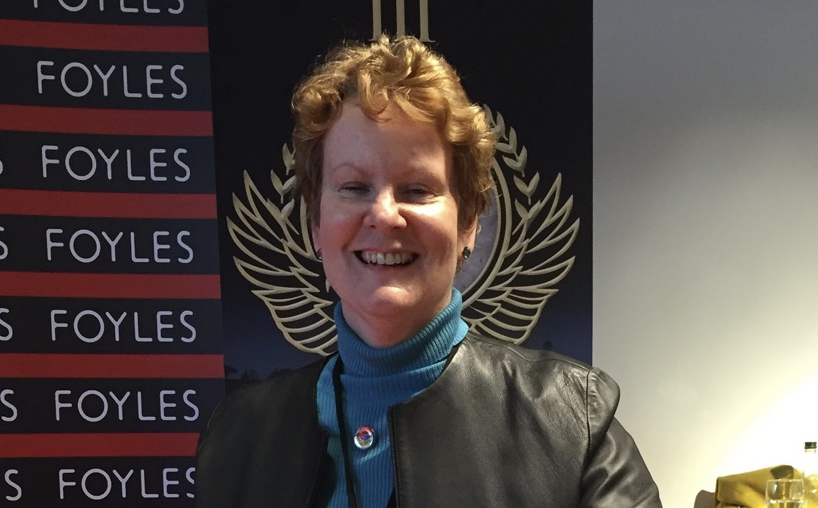 When I set out in 2010 to find out what to do with the 90,000 words I’d bashed out in 90 days, I didn’t have a clue about the publishing world. A business friend, Denise Barnes, also a novel writing beginner, guided me towards the Romantic Novelists’ Association who has a mentoring scheme for new writers. From there, I joined various associations – the Historical Novel Society, the International Thriller Writers, the Society of Authors, recently, the Crime Writers’ Association, but most importantly the Alliance of Independent Authors.
When I set out in 2010 to find out what to do with the 90,000 words I’d bashed out in 90 days, I didn’t have a clue about the publishing world. A business friend, Denise Barnes, also a novel writing beginner, guided me towards the Romantic Novelists’ Association who has a mentoring scheme for new writers. From there, I joined various associations – the Historical Novel Society, the International Thriller Writers, the Society of Authors, recently, the Crime Writers’ Association, but most importantly the Alliance of Independent Authors.
After honing and polishing the manuscript and attending classes and courses and absorbing knowledge from mentors I sent INCEPTIO off to agents and publishers so they could put my work out to the world. However, alternative history Roman thrillers seemed not to be the hottest cake on the tray. They said lovely things about my writing – intelligent, absorbing, insightful, exciting, good plotting, well-researched, etc. etc. so I gathered the impression my work was of publishable standard. Independent assessments had said the same.
Hooray!
However, they didn’t know how to sell it: ‘doesn’t fit with our list’, ‘not in a defined genre’, ‘loved it but not sure we could take it past the sales & marketing team’.
Deep breath…
I vaguely knew about this thing called self-publishing, so I investigated. I even hacked through a mountain of HTML and experimented in 2012 with putting Military or Civilians? a version of my MA history dissertation on Amazon. (It still sells now and again!), but I was an amateur.
Fed up with having rejection letters piling up and finding out how little most authors actually received for their work and how bound they were to deadlines, contracts and publishing house demands, I decided to explore self-publishing further.
 After a great deal of research and one near miss, I discovered an ethical publishing services company, SilverWood Books in Bristol. They did all the donkey work and hand-holding I didn’t want to do. They would produce upload and print-ready files and publish them for me.
After a great deal of research and one near miss, I discovered an ethical publishing services company, SilverWood Books in Bristol. They did all the donkey work and hand-holding I didn’t want to do. They would produce upload and print-ready files and publish them for me.
Their product of INCEPTIO was stunningly beautiful and so professionally put together that I nearly burst into tears of joy. But it was up to me to get on and market and sell my books. I’d run a business or two, so I knew the territory of juggling production, PR, marketing, customer relations, networking and similar arcane skills.
How well or badly was up to me. What I chose to have on my cover and inside my book was up to me. I was a the one paying SilverWood to work for me.
I had a breathtakingly enjoyable launch at my local Waterstones and sold fifty-five books, thirty more than they had ordered in. SilverWood had warned me to take an extra box of books!
And broadcasting star Sue Cook was my first customer as well as speaking that evening!
After a few years and books, the SilverWood director suggested that I was now so at ease in the publishing world and at marketing my own books I should ‘graduate’. I already had my Amazon KDP account and quickly set up my additional retailer accounts with Apple, Kobo and Barnes & Noble.
And off I went!
Top London agency Blake Friedmann sold the audio rights for four of my books to Audible Studios, but I retained all the other rights – an indie benefit.
JULIA PRIMA is the tenth book in the “unsaleable” Roma Nova thriller series (and has just been awarded the “Editors’ Choice” accolade by the Historical Novel Society) . Double Identity in my second thriller series became one of BookBub’s best books in March 2021. All the books are sold worldwide and (probably immodest of me to say so) INCEPTIO has been #1 in UK, US, Canada and Australia on Amazon several times. The reviews are nearly all 4 and 5 star and readers, reviewers and fellow authors have said some lovely things about the books.
That’s the history. But is it real publishing?
It’s not just me. Self or indie publishing is now firmly established as a route into publishing. Whilst it’s been a tough road, I’ve loved being part of the pioneering wave. Whilst most most authors mirror their mainstream colleagues by making modest or comfortable income, often one supplementing their main one, some indie authors make stellar, six-figure amounts.
Standards? Of course, standards vary and like mainstream publishing, there are some ropey books out there. However, readers are a canny lot and will tell all their friends if what they’re reading is rubbish. They are the judges! Any indie who doesn’t have a professional cover and at least a copy edit is asking for trouble. But make no mistake – it’s hard work being creator, project manager, advertising manager, marketer, graphic manipulator, content manager, typesetter, accountant, blogger, reviewer. Professional indies who have exacting standards and are prepared to put the hours in are the ones who will survive.
Cutting edge. Many innovations in ebook and print on demand production, marketing techniques, the growth of email lists, blog tours, publishing software such as Vellum, etc. have been developed by or incited by the needs of indies (and often latched onto by mainstream publishing houses).
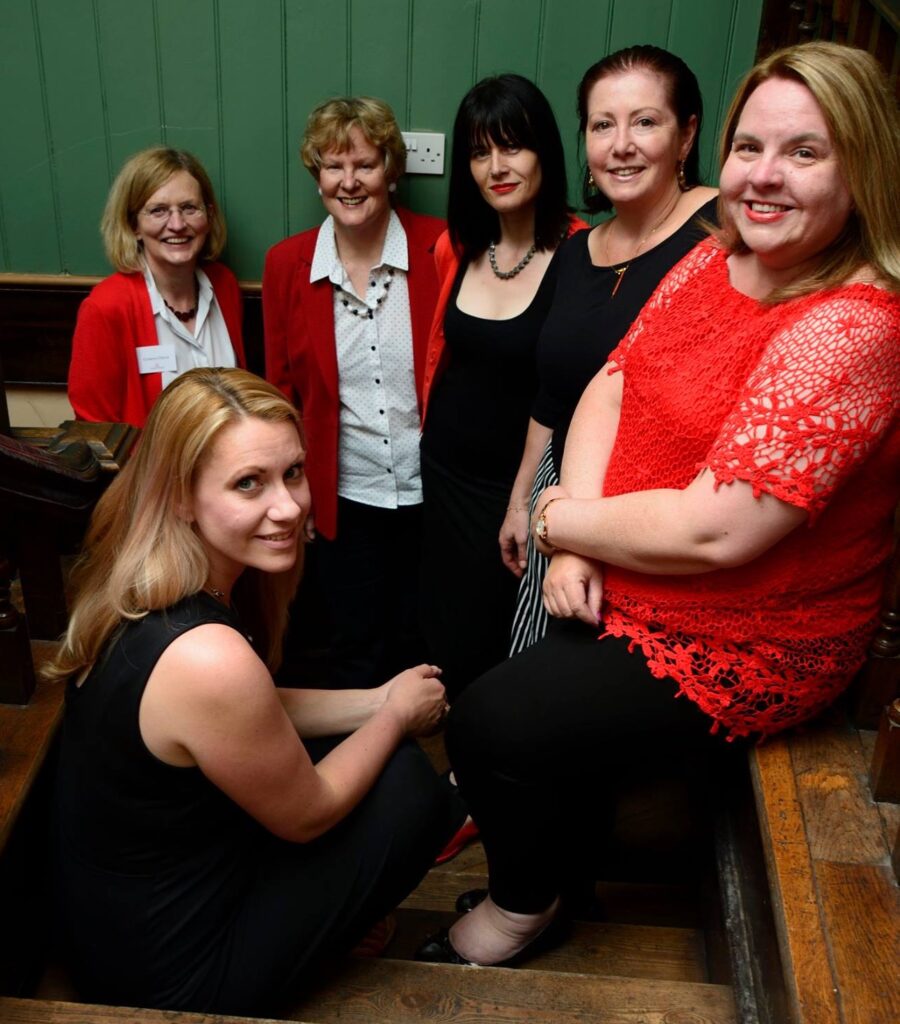
Left to right: Catriona Troth, me, Jessica Bell, JJ Marsh, Gillian Hamer. Seated in front: J D Smith (Photo: Jessica Bell)
Going it alone? Not on your life! Indie authors are famous for their mutual support across genres and continents. Whether in an association, at events, blog swaps or just simple messaging, they will give generously of their time and experience. Here’s an example when I launched RETALIO in 2017. (Photo right)
It’s down to you anyway. Only the top slice of mainstream authors have extensive marketing support. Most authors have to do the legwork anyway: social media, radio interviews, blog tours, mailouts. They are usually required to maintain a digital platform: website, blog, Facebook, Twitter, Instagram, etc. Unlike indies, they could also not have their contract renewed and their books could be remaindered or, worse, pulped.
Reasons why people publish independently
Debbie Young, cozy crime writer, United Kingdom
” ‘Because it’s there’, as Hillary said about tackling Everest. Actually, because self-publishing in its modern form is so much more inviting and enabling than the traditional route, and it leads so much faster to the finished product, and, if done well, without compromising on quality. It also means that publication is inevitable, rather than just the wafer-thin possibility offered by with the Big 5. I truly believe that there has never been a better time to be an author than in the present day.”
Anna Belfrage, historical novelist, Sweden
“I like being in control. As an Indie, I have the last say on cover, editing and pricing. This doesn’t mean I don’t take advice – I use professional editors and cover artists – but I make the final call, ensuring my artistic integrity.”
Charlene Newcomb, historical fiction and sci-fi author, USA
“I watched talented writers in three different critique groups struggle to have manuscripts accepted through traditional publishing. As I learned more about that process through other writers and looked at trends in the historical fiction genre, I knew my medieval series was in niche that wasn’t popular – it wasn’t Tudor or Regency era, and it included a gay romance. It would be a hard sell to a publisher. When I heard about CreateSpace and KDP, B&N, and Smashwords I decided to go that route. Self-publishing has given me more creative control, including the ability to work directly with my chosen cover designer. Deadlines are self-imposed, and can be altered. Publication date is set by me. Now if only I could write a new novel every year…”
Keith Dixon, crime fiction writer, France
“I started self-publishing in 2008 when it first became possible, through CreateSpace, which published paperbacks. I’d been trying to get commercially published for years and came close but no final takers. So I had a go with the novel I was just finishing, largely as a proof of concept. Then it just seemed easier to carry on with it.”
Helen Hollick, historical novelist and non-fiction author, UK
“As a ‘hybrid’ author I have the best of both publishing worlds. The advantage of traditional publishing is that my books are more likely to be for sale in bookstores, but being Indie is much more satisfying because of being in total control. Marketing is hard work but it is necessary for indie and traditional. Being indie I can also write what I want, change genres, explore different things to write about. Traditional publishers prefer their authors to stick to the same tried and tested type of novel. Of the two? I prefer indie, errors can usually be quickly and easily put right, not so with a traditional publisher, errors stay there.”
Kathryn Gauci, historical fiction author, Australia
“Self-publishing has come a long way since I wrote my first book, The Embroiderer, published 2017. That’s when we first met Alison, and you helped me enormously along the way as we both reached out further. I am happy I made that move now. I knew I was in it for the long haul but I am in control of my own destiny and, to be honest, make more money than some of my traditionally published friends. Once you start to build up a profile, Amazon especially, starts to promote you. If a traditional publisher offered me a contract tomorrow I would most likely knock it back. Downside is getting the books translated. I was lucky with The Embroiderer, but as yet haven’t got the others translated. Working on that one though.”
Elizabeth J StJohn, historical biographical fiction author, USA
“I independently published my first novel when a well-known agent told me she would accept the book, but only if I cut it to 90,000 words and gave it a happy ending. As a work of biographical fiction, I couldn’t do it, so I discovered Create Space and self-published. The book became an immediate best-seller on Amazon. Now, seven years later, it is still successful, reaching #1 on Amazon in Medieval Historical Fiction just this week. I love working with professional editors and cover designers to create my work; the freedom of writing what, when and how I want, along with being responsible for my own marketing, pricing and promotions is a privilege I would find impossible to give up. My revenues are mine, the rights remain with me, and, most of all, I enjoy being part of a thriving community of independent authors who support and encourage our creative and commercial goals.”
Cathie Dunn, historical novelist, France
“I first self-published in 2012. I’d written a romantic medieval murder mystery, and for years, I didn’t know where it was going. Murder mystery? Romance? Historical Fiction? All in one? As you can see, it didn’t fit into any pre-determined boxes, and whilst I was published with a US-based indie press with one book at the time, this new one was not strictly a romance. It also contained murder and battle scenes. It was tricky to find publishers who wanted that combination back then. So I decided to self-publish it on Amazon and Smashwords, though it’s currently exclusively available on Amazon. Then, five years ago, I joined several author friends and we set up Ocelot Press, an author cooperative. Each of us self-publishes our own books, but it’s all under one banner. Iit’s a system that works well, as you have a small, trusted network of author friends to help you with everything.”
Jean Gill, Novelist, photographer and poet
“At first I enjoyed ‘freedom from’; no rejection letters, no waiting; no disappointment with publishers (when they did accept a book) over cover choice or wrong-headed editing (a chapter was cut once and I afterwards learned it was to reduce page count and costs); above all, no accountability to anyone but me for sales performance. Now I take all that for granted and what I love is ‘freedom TO’; publish what and when I want, with my professional partners for covers and editing; define success on my terms; see sales instantly and control my finances (royalties coming in and marketing/publishing expenditure); and to enjoy being part of the supportive Indie/ self-published community.”
There you have it. Ten years on, I’m still bashing out my words, and ten years on, my readers are still reading them.
Alison Morton is the author of Roma Nova thrillers – INCEPTIO, CARINA (novella), PERFIDITAS, SUCCESSIO, AURELIA, NEXUS (novella), INSURRECTIO and RETALIO, and ROMA NOVA EXTRA, a collection of short stories. Audiobooks are available for four of the series.Double Identity, a contemporary conspiracy, starts a new series of thrillers. JULIA PRIMA, a new Roma Nova story set in the late 4th century, is now out.
Find out more about Roma Nova, its origins, stories and heroines and taste world the latest contemporary thriller Double Identity… Download ‘Welcome to Alison Morton’s Thriller Worlds’, a FREE eBook, as a thank you gift when you sign up to Alison’s monthly email update. You’ll also be among the first to know about news and book progress before everybody else, and take part in giveaways.
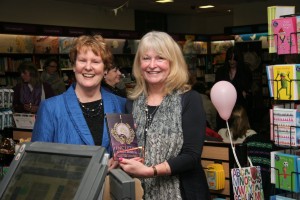
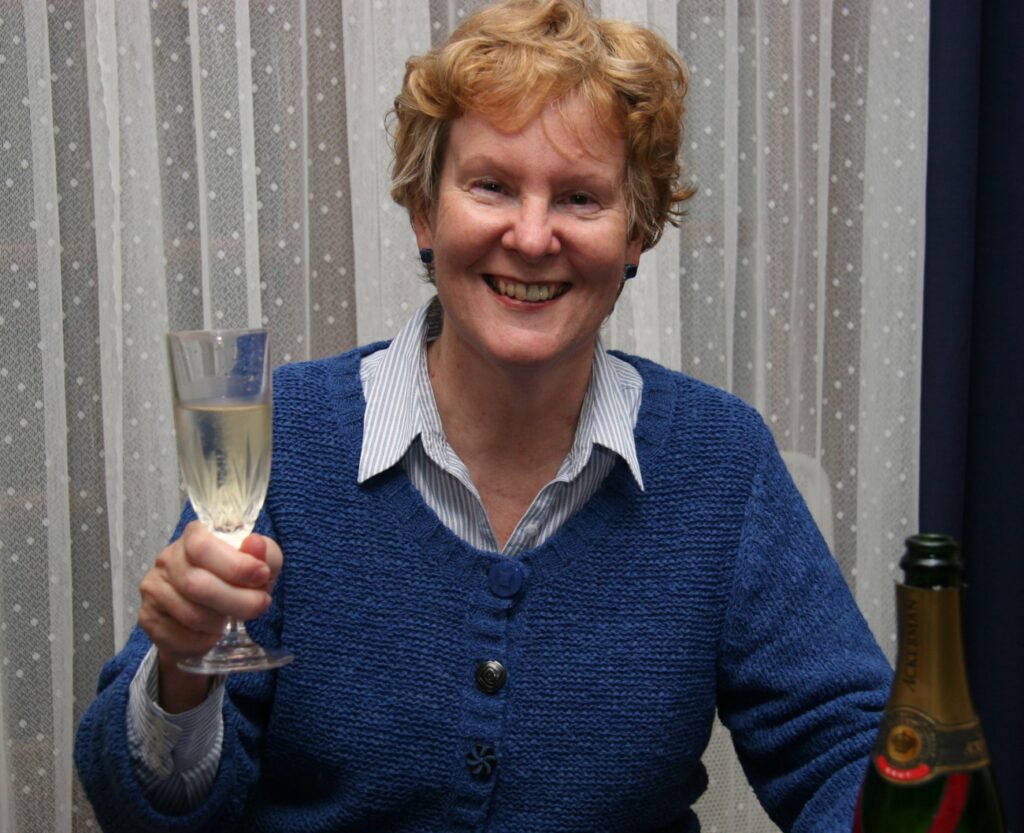












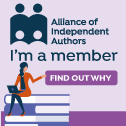
Thanks for including my quote Alison and here’s to the next ten years!
Thank you, Helen. You have been a great inspiration and helper on my journey. As you say, onward!
Very nice to be included – and I couldn’t help but notice the breadth and width and height ( 😉 ) offered by the quoted authors. Everything from Sci-Fi to cozy. That, IMO, is what Indies bring to the table – we add spice and variation to mainstream publishing.
Thank you for contributing, Anna; we’ve been a long time on this road together! I admit there are a fair few historical fiction writers, but we are spread across the world – another sign of the universal success of indie publishing.
I second everything you’ve said, Alison. I began in 2010 and it’s been a learning curve and a magnificent experience and you are so right about the collegiality of indies. There’s no professional jealousy and one upmanship, just support.
Definitely a learning curve, Prue! But I think that’s part of the attraction. over the years, I’ve seen a load of trad publishers adopting indie initiatives and habits.